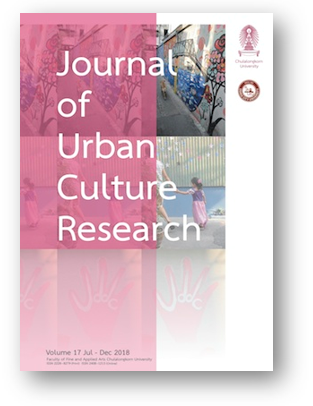A Community’s Buddhist Arts Conservation-based Voluntourism Management: A New Innovation Arousing Community’s Conservational Participation
DOI:
https://doi.org/10.14456/jucr.2018.9Keywords:
Voluntourism, Conservation, Buddhist-Arts, Community ParticipationAbstract
The purposes of this study aimed to investigate the level of community participation during Buddhist arts conservation-based voluntourism management, and to predict the most influential activities taken from the Buddhist arts conservation based voluntourism management of which aroused their community participation. The duration of establishing the Buddhist arts conservation-based voluntourism program, which lasted for 7 months, was conducted by the application of participatory action research (PAR) with the AIC techniques. Afterwards, three pilot Buddhist arts conservation-based voluntourism programs were all conducted. Both a questionnaire and an in-depth interview were all carried out for investigating research findings. Data collection was gathered from 173 community members partaking this voluntourism establishment. Descriptive and inferential statistics were both measured for quantitative variables, meanwhile both content analysis and data triangulation check were applied to measure qualitative variables. The results of this study revealed that the level of community participation towards the Buddhist arts conservation-based voluntourism management was in co-operation level in every variables; moreover, the most influential activity which aroused community participation, with level of significant difference of 0.05, were a reading of inscription activity, followed by a Buddhist-arts apology rites, a counting and preliminary numbering of Buddhist-arts activity, and a photograph and academically clean Buddhist-arts activity.
Downloads
Published
How to Cite
Issue
Section
License
Authors authorize the JUCR to publish their materials both in print and online while retaining their full individual copyright. The copyright of JUCR volumes is retained by Chulalongkorn University.
The views and opinions expressed herein are those of the individual author(s) and do not necessarily reflect the policies or opinions of the Journal (JUCR), it editors and staff, Chulalongkorn University, or Osaka Metropolitan University.








